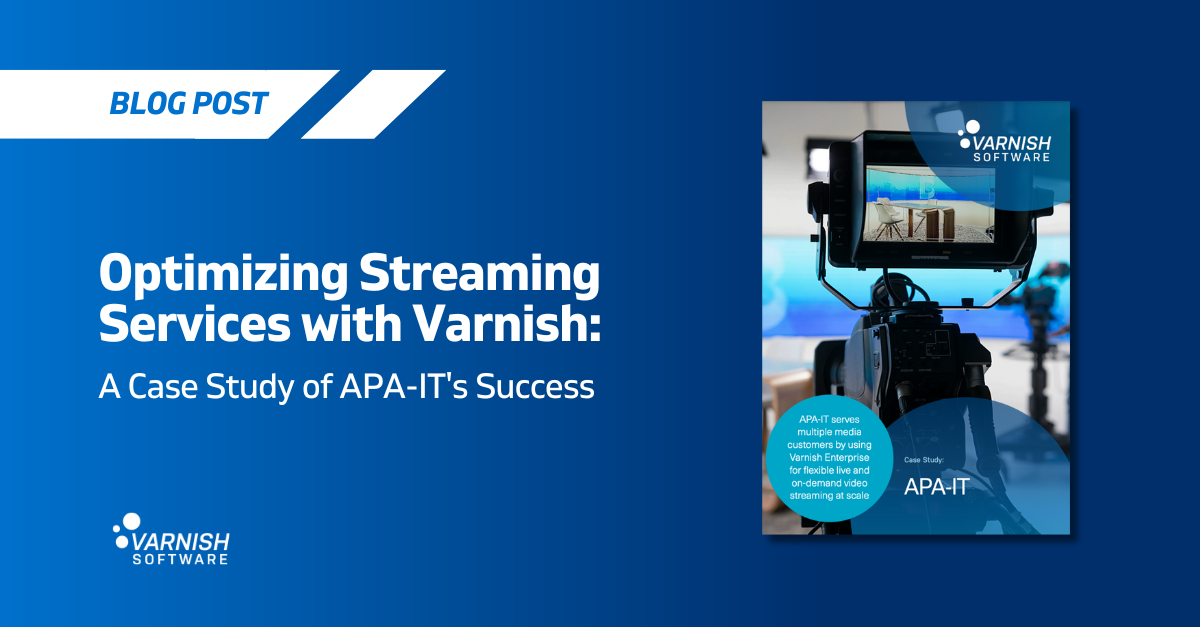APA-IT, Austria's premier media and broadcasting service provider, excels in offering IT services to the Austrian news agency and various other media companies. It has vast expertise in providing IT solutions for content production and distribution, including live and on-demand video streaming services.
The Challenge: High-Demand Streaming on a Massive Scale
Serving customers who provide some of the largest streaming platforms in Austria, APA-IT needed to be able to support video streams to wide audiences. APA-IT recognized the same two challenges as every other enterprise building out high-quality streaming services:
Hardware Limitations: Initial strategies involved direct streaming from servers, demanding substantial hardware resources and lacking flexibility.
Scaling Requirements: As demand for streaming services grew, APA-IT needed a scalable, flexible solution that could handle increasing traffic without sacrificing performance.
How APA-IT Implemented Varnish Enterprise
Recognizing these challenges, APA-IT turned to Varnish Enterprise. As powerful caching and content delivery software that has set world records for streaming performance and efficiency, the decision made sense. When it came to implementing Varnish, their goals included:
Hardware Optimization: The primary goal was to consolidate numerous streaming servers and utilize their bandwidth more effectively through high-performance caching servers. By utilizing Varnish caching servers they could handle more traffic from a smaller footprint, maximizing the efficiency of existing bandwidth and reducing reliance on additional hardware.
Tailor to Specific Needs: Varnish’s built-in edge language, Varnish Configuration Language (VCL), enabled APA-IT to adopt the features and capabilities they needed, supporting unique requirements like geo-protection, token-based stream protection, and load shedding during high-traffic periods.
Future-Proofing: By leveraging the flexibility and performance of Varnish, APA-IT wanted to not only meet current demands but be able to expand their CDN offerings and consider adding international nodes in future.
Results
Improved Stability and Performance: Varnish Enterprise enabled APA-IT to handle high traffic volumes with greater stability, ensuring a seamless streaming experience for users.
Cost Optimization: By optimizing resource usage, APA-IT reduced the need for additional hardware, leading to significant cost savings.
Efficient Management of High Traffic Periods: Varnish Enterprise proved invaluable in managing peak traffic, maintaining high performance even during the most demanding times.
Streamlined Development Processes: The solution enabled quicker and more efficient development cycles, reducing the time to implement new features or address issues.
A Model for Technology Leaders and DevOps Teams
APA-IT’s successful deployment of Varnish Enterprise stands as a testament to the power of innovative CDN solutions in meeting the demands of large-scale streaming services. For technology leaders, DevOps teams, and streaming engineers, this case study illustrates the importance of selecting a scalable, flexible, and cost-effective solution to stay ahead in the fast-evolving digital landscape. By focusing on technical excellence and strategic resource management, APA-IT not only enhanced its service offering but also set a benchmark for others in the industry.
For more detailed insights and technical specifics, delve into the full case study.
/VS-logo-2020-197x60.png?width=136&height=60&name=VS-logo-2020-197x60.png)




